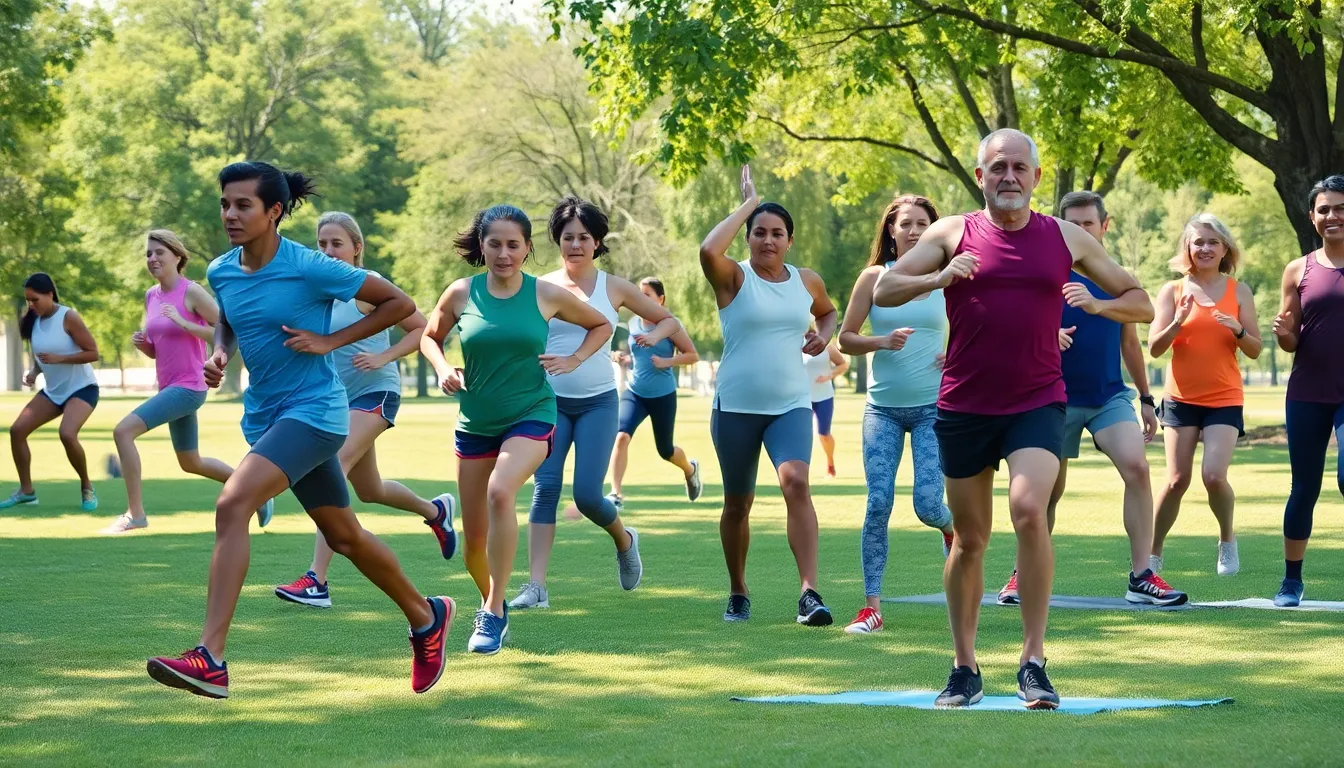In a world where couch surfing is a competitive sport and the closest some get to exercise is lifting a remote, understanding physical ability has never been more crucial. It’s not just about how fast one can run or how many push-ups one can do; it’s about the everyday feats that keep life interesting—like chasing after the ice cream truck or navigating the treacherous terrain of a toddler’s toy-strewn living room.
Physical ability is the unsung hero of our daily adventures, influencing everything from how we play sports to how we tackle life’s little challenges. Whether it’s scaling a mountain or simply getting out of bed without a groan, recognizing and enhancing physical ability can lead to a more vibrant, active lifestyle. So, let’s dive into the fascinating world of physical prowess and discover how it shapes our lives in ways we often take for granted.
physical ability
Physical ability encompasses a range of skills and capacities essential for navigating daily life. These abilities include strength, flexibility, endurance, and coordination, all impacting overall functionality.
Definition of Physical Ability
Physical ability refers to the capacity to perform various physical tasks effectively. It involves the integration of multiple components like muscular strength, cardiovascular endurance, and agility. Factors influencing physical ability include genetics, training, and health conditions. Individuals exhibit different levels of physical ability based on these aspects, highlighting the diversity in human capabilities.
Importance of Physical Ability
Physical ability plays a vital role in quality of life. It enables individuals to participate in activities such as walking, climbing stairs, and engaging in sports. Enhanced physical ability contributes to better health outcomes, such as reduced risk of chronic diseases. Additionally, it fosters independence and boosts self-esteem by allowing people to perform daily tasks with ease. Recognizing the importance of physical ability encourages proactive approaches to maintaining health and well-being.
Factors Influencing Physical Ability

Physical ability results from a combination of various factors that shape an individual’s capacity to perform activities. Understanding these influences provides insights into optimizing physical potential.
Genetics and Physical Ability
Genetic makeup plays a significant role in determining physical abilities. Inherited traits can influence muscle fiber composition, which affects strength and endurance. For instance, individuals with a higher proportion of fast-twitch muscle fibers excel in sprinting and explosive movements. Conversely, those with more slow-twitch fibers often perform better in endurance activities. Research indicates that genetics may account for up to 50% of physical performance variability among individuals. Variations in genes also impact flexibility and recovery rates. These genetic differences highlight the natural diversity in individual capabilities, emphasizing that while genetics set limits, training can enhance physical performance.
Environmental Factors
Environmental conditions significantly impact physical ability. Access to facilities for training, availability of recreational spaces, and exposure to sports can vary widely and influence physical development. Factors such as socio-economic status can affect access to nutrition, which is vital for optimal performance and recovery. Weather conditions also play a role; for example, extreme temperatures can hinder outdoor activity levels. Additionally, cultural attitudes toward exercise and sports shape participation levels. Supportive environments encourage active lifestyles, leading to better health outcomes and increased physical capabilities. Understanding these environmental influences helps individuals navigate their circumstances to improve their physical potential.
Enhancing Physical Ability
Enhancing physical ability demands a multifaceted approach, focusing on both training and nutrition. Readers can adopt various strategies to maximize their potential and improve overall well-being.
Training and Exercise
Engaging in regular training improves strength, flexibility, endurance, and coordination. Incorporating a mix of cardiovascular activities, strength training, and flexibility exercises leads to balanced development. High-intensity interval training (HIIT) boosts cardiovascular fitness while promoting muscle growth. Participating in sports or group activities fosters skill acquisition and social interaction. Tailoring workouts to individual fitness levels helps maintain motivation and prevent injuries. Consistency, combined with progressive overload, ensures continuous improvement in physical abilities.
Nutrition’s Role
Nutrition plays a pivotal role in enhancing physical performance and recovery. Consuming a balanced diet rich in carbohydrates, proteins, and healthy fats provides essential fuel for workouts. Hydration is crucial, as even mild dehydration can affect performance. Incorporating fruits and vegetables supplies vital vitamins and minerals, enhancing overall health. Timing meals around workouts optimizes energy levels and aids in muscle recovery post-exercise. Proper nutrition supports an active lifestyle, helping individuals reach their physical goals efficiently.
Measuring Physical Ability
Measuring physical ability involves a combination of tools and methods to assess an individual’s performance across various physical tasks.
Standard Assessment Tools
Standard assessment tools play a vital role in evaluating physical ability. Tests like the 1-mile run gauge cardiovascular endurance. The sit-and-reach test measures flexibility, while the vertical jump test assesses leg power. Strength can be evaluated using bench press or squat tests. Practitioners often use these tests in fitness assessments, providing valuable insights into an individual’s capabilities. Many fitness professionals incorporate these assessments into training programs, guiding personalized approaches to enhance performance.
Subjective vs. Objective Measures
Subjective measures gauge personal perceptions of physical ability, encompassing self-reported fitness levels and perceived exertion. Such insights can help track individual progress and motivate improvements. Objective measures, on the other hand, utilize quantitative data to evaluate performance. They include metrics derived from timed tests and weight lifted. While both types of measures are valuable, combining them provides a comprehensive overview of physical ability. This combination enhances understanding, fostering tailored fitness plans that address unique strengths and weaknesses.
Conclusion
Physical ability is a vital aspect of life that influences daily activities and overall well-being. By understanding the diverse factors that shape physical capabilities, individuals can take proactive steps to enhance their strengths. Embracing a balanced approach that includes regular training and proper nutrition can lead to significant improvements in performance and self-esteem.
Moreover, recognizing the importance of both subjective and objective measures allows for a more tailored fitness journey. By prioritizing physical ability, individuals can unlock a more active and fulfilling lifestyle, ultimately leading to better health outcomes and increased independence.

